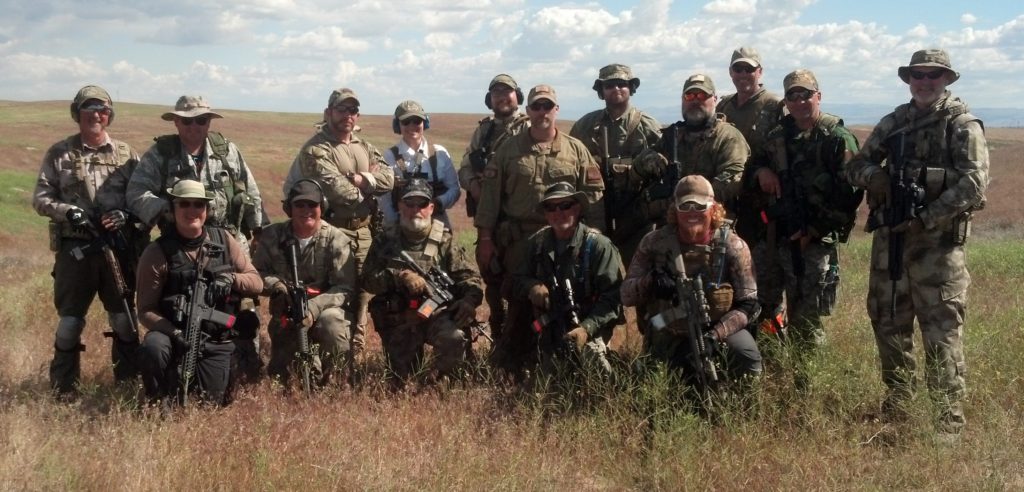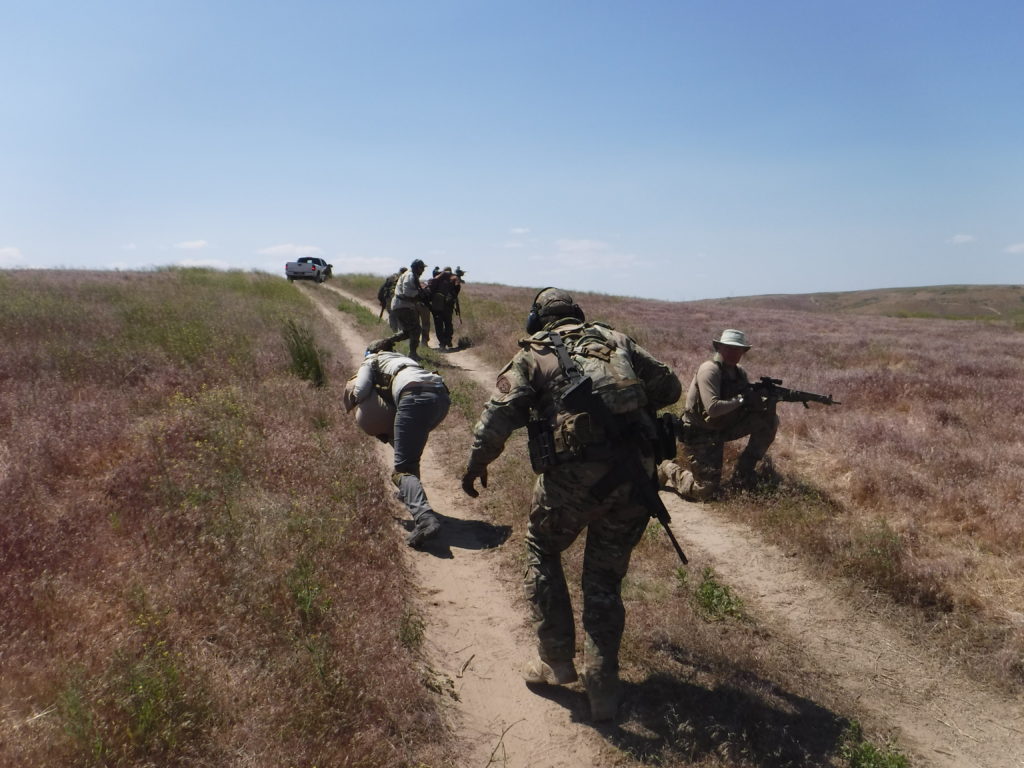Student Review: Idaho 8 Day Class May 2016: Rhino11
Rhino11 was the organizer of the Idaho class. He has attended several classes at the VTC in West Virginia, and felt sufficiently motivated to bring the training to his friends and family in Idaho.
MVT Class List
MVT Remote / Group / Mobile Classes
We had a good week in Idaho with Max (supported by Chris) teaching Combat Team Tactics (CTT) , Mobility & Combat Patrol (CP) sequentially. There were terrain challenges, specifically badger holes (lots of badger holes!), some big & deep enough to fall into up to your waist. The weather in southern Idaho is gorgeous in May, and we were not disappointed. All but a couple of the students were new to Max Velocity Tactical training, and I will leave it to them to tell you what they experienced and learned. This was my first Mobility class, and I learned a lot. In this review I will try to compare & contrast what I have learned in CTT, CP, Mobility and Force on Force (FoF).
Lessons learned from Mobility: unarmored vehicles are thin skinned and extremely vulnerable to small arms fire. In the real world rifle rounds zip through both sides, and every vehicle, whether stationary or moving, is a bullet magnet once the shooting starts. Max and Chris have years of experience in Iraq and Afghanistan dealing with vehicular ambushes, which are a constant threat in that part of the world. Think about what your options would be if you ran into a blockaded road with a flank ambush in place, and you had your family in one or more of your vehicles. Have you considered what you would do if your spouse or child is hit? This is very scary stuff which few of us have thought through, let alone rehearsed. If you entertain any idea of using vehicles to get your family to a safer location after the ‘SHTF’ you owe it to them to attend Mobility training.
Decision making, leadership & free play: Combat Team Tactics and much of Combat Patrol is tightly scripted because it has to be. You learn the fundamental drills and procedures on which everything else is built. Until you can execute the basic maneuvers properly and safely, with your teammates, you cannot progress to anything more complex. In the military we spend weeks and months (with blanks mostly) building up to what Max force feeds you in less than a week, using live rounds.
In Mobility (and Force on Force) you get to work within scenarios where you (the students) make decisions which have immediate impact on what happens during the exercise. The cadre will often let poor decisions play themselves out (unless there is a safety concern).
In our Mobility class the cadre added unexpected but realistic elements to exercises under way in the form of casualties or vehicles going down. In one of our exercises we chose to drive our trailing vehicle ‘onto the X’ (into the kill zone of the ambush) in an attempt to extract family and a wounded team member. In short order we had two vehicles disabled and even more people ‘in the shit.’ Getting off the X is challenging enough without having to carry wounded team members out on you back while doing it. Learning these lessons now is far superior to the alternative.
We had five students in their sixties, a lass in her twenties and a couple of guys in their thirties; the rest of the class was in their forties or fifties. By day two it was obvious who had been working on their core and leg strength, and who had not. If you are going to advance beyond the ‘I am a hero in my own mind’ stage, you need to get and stay fit. You don’t need to be in great physical condition to attend MVT training, but you will learn more if you are in good shape. Your fire team can only move as fast as the slowest member. These classes will give you real world feedback about your fitness level.
There is a downside to this training: you will find it difficult or impossible to train with individuals who have not attended Combat Team Tactics or served in a combat arms military organization. Your friends or family will ask: “Why can’t you just teach us what Max taught you?” The answer is: “There is too much here which cannot be taught in dribbles and drabs. Everything you learn on day three is dependent upon you having internalized what you learned on day two, which is totally dependent on what you learned on day one. This is immersive battle inoculation training, and even if I had Max’s command of the material (which I don’t) I could not teach this to you a little at a time.” On the other hand you can teach your family and friends the correct way to manipulate their rifles, clear malfunctions, and perform basic things like reloading and going from standing to prone. Max spends a good bit of the first part of CTT helping students ‘get over’ (there is a more technical term I won’t use here) the training scars they have built up. In the not too distant future I expect my grandchildren will show up for MVT training with sound basic skills already mastered.
We did not do Force on Force training this iteration, but hopefully we will next time. When you are learning the fundamental techniques there is no immediate penalty for doing stupid stuff like reloading in the open, failing to use available cover or bounding forward while your battle buddy is reloading. The cadre will point out to you what you should be doing, but it often doesn’t quite stick. In Force on Force the opposition will immediately drive home your mistakes by shooting you in the face. It is the most immediate form of feedback, and your excuses of why it happened are rendered irrelevant (just like in the real world). These courses fit together like pieces of a puzzle. You will things from each which are not covered in the others. Because these skills are perishable, you need to keep adding to your knowledge/skill base, which will help keep sharp what you have learned before.
There is a world of difference in the capabilities of the ‘combat couch potatoes’ and those who have attended training. It boils down to whether you are a liability or an asset. Choose wisely.


